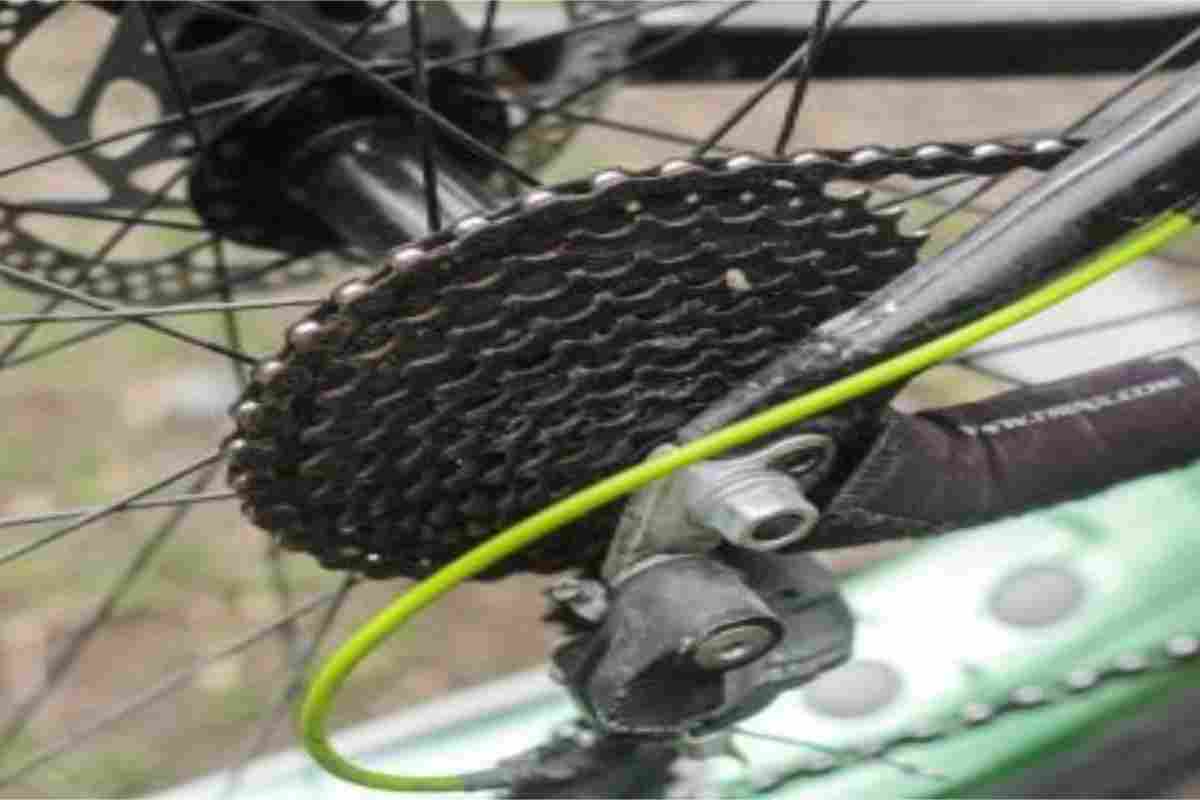How to bleed your bicycle disc brakes – Hydraulic disc braking is increasingly popular with cycling enthusiasts, as it seems to be more effective than so-called pad braking, especially in wet weather. Disc brakes are also very popular because they require less maintenance than brake pads and, above all, less quickly.
However, it is still advisable to clean and bleed your bike’s hydraulic disc brakes at least once a year. Discover our tutorial to bleed your bike disc brakes.
Table of Contents
1. Understanding the disc brake system on a bicycle
A bicycle equipped with hydraulic disc brakes will brake thanks to the pressure transmission from the brake lever to the brake calliper via a liquid. This fluid can be either mineral oil or, most commonly, DOT. Since the physical characteristics of the oil make it incompressible, the latter is not disturbed during its transmission, and the braking is immediate and effective.
Please note it is essential that the oil or DOT in your disc brake is not bothered by the presence of air or water, which would reduce its operation and sometimes even cause it to malfunction. It is, therefore, necessary to keep the disc braking system wholly sealed.
Therefore, the disc braking system is more efficient than pad braking and, above all, requires less maintenance. However, the latter will be more complex to ensure that its quality is not impaired. To do this, you will need to bleed your disc brakes regularly.
Allows air bubbles that may have entered the system to escape and evacuate the old liquid contaminated by humidity or impurities. An operation to once or twice a year to maintain an effective disc braking system. You will also have to remember to change the disc brake pads, as explained here.
2. How to bleed a disc brake? – Bleed Your Bicycle Disc Brakes
Bleeding a bicycle disc brake is done in several careful steps not to introduce air into the brake system. To do this, you will need to with the appropriate brake fluid for the brand of the disc brake system. If you use juice from another brand to bleed your disc brakes, you should know that this represents a case of warranty exclusion in the event of a problem.
Each liquid has its specific colour (pink for Shimano, blue for Magura, etc.). You will also need a Bleed Kit, which is often two syringes to introduce the new brake fluid and absorb the old simultaneously.
Step 1:
Unscrew the brake lever bleed screw using a Torx key and place a cloth on the side of the handlebar to protect against possible brake fluid leaks.
Step 2:
Screw one of your two empty syringes in place of the bleed screw of your disc brake lever, remove the pads from the brake calliper and replace them with a wedge supplied with the bleed kit disc brake.
Step 3:
Unscrew the calliper bleed screw this time and wrap your calliper in a cover to avoid depositing new brake fluid on it.
Step 4:
Screw your second syringe filled with brake fluid (DOT) onto the brake calliper bleed screw. You will then push the brake fluid from the syringe so that the old and a little bit of the new rises in the needle positioned on the brake lever.
Step 5:
Pump the air using the full syringe to ensure that your brake circuit is closed.
Step 6:
Gently remove the syringes and re-screw the bleed screws on the brake lever and calliper. Then, replace your brake pads correctly.
Step 7:
Make sure the disc brake lever and calliper are DOT free and functional.
3. Braking problem after bleeding?
Did you bleed your bike’s hydraulic disc brakes and have braking issues? Most often, this is a sign of air in your brake system. For this, there is no miracle solution; you will have to start bleeding your disc brake from scratch and do it more carefully.
If your disc brakes begin to squeal, then it’s no longer an air problem in your circuit but more likely due to an impurity that has slipped into the brake fluid or on the pads. Finally, as a last resort, do not hesitate to contact your bike shop, which can help you bleed your bike disc brakes.

